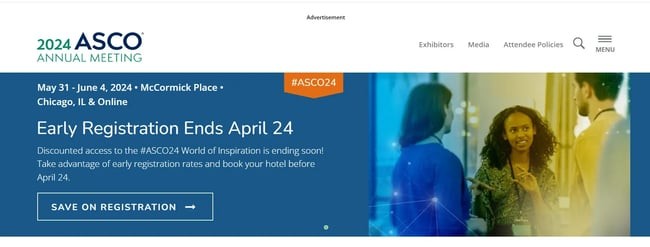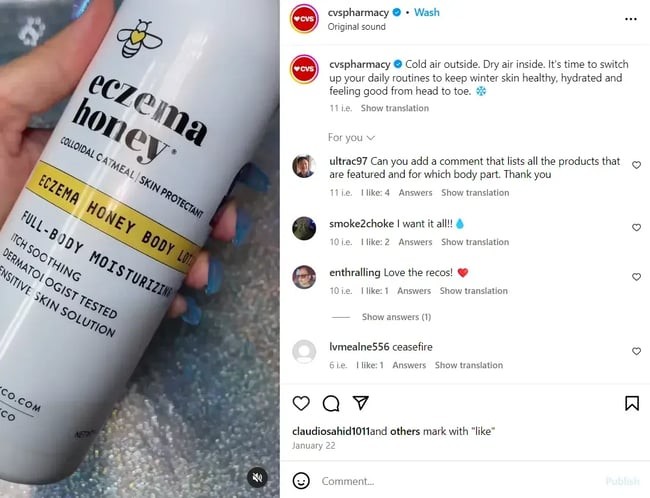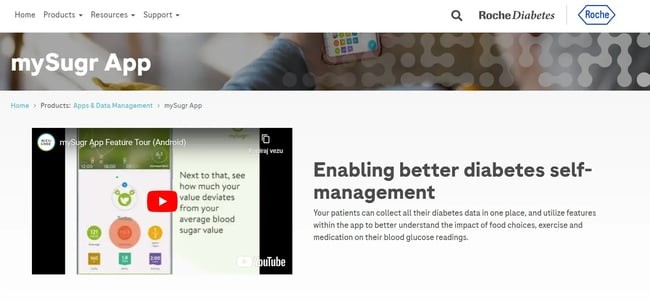“Take this pill, and watch your migraine disappear in ten minutes!”
How do drug commercials make those miracle cures sound so easy? I used to sell supplements for one fitness company in my early student years and always felt a pang of anxiety promoting products. What if they didn't work? What if there were side effects?
And now, I'm curious: how do pharma ads get away with promising instant relief without a million lawsuits? I bet you’re intrigued, too.
I did some deep, quality research to learn more about the regulations behind those glossy pharma ads. So, let's see how it really works.
What is Pharmaceutical Advertising?
Pharma advertising is the promotion of medications through different channels — TV, print, offline, or online. It's a huuuge business, with billions spent every single year. For instance, in 2023, the global drug market was worth $1.6 trillion!
However, this is the most complex and regulated industry regarding advertising. Ads must include potential side effects along with the benefits — no exception.
The History of Pharma Advertising
Pharma advertising used to focus mainly on doctors, but today consumers are in the first plan. Check out the timeline of drug advertising history:
- 1905: The “Great American Fraud” exposes misleading claims in patent medicines.
- 1906: The Pure Food and Drug Act requires accurate labeling of ingredients.
- 1911: A court case allows misleading claims about a drug's benefits.
- 1912: The Sherley Amendment bans false therapeutic claims, but proving intent is tricky.
- 1927: The FDA is established to regulate drugs.
- 1938: The Federal Food, Drug, and Cosmetic Act strengthens FDA power and requires proof of drug safety before marketing.
- 1962: The Kefauver-Harris Drug Amendments require proof of effectiveness and restrict marketing tactics.
- 1969: The FDA establishes clear guidelines for prescription drug advertising.
- 1981: The first major direct-to-consumer TV ad for a prescription drug airs. The FDA struggles to regulate this new marketing approach.
- 1980s: Direct-to-consumer marketing explodes. Regulations become more relaxed, especially regarding side effects in TV and radio ads.
- 1990s: Online access to medical information grows, and pharmaceutical companies embrace Internet marketing.
- 2004: The FDA allows “major risks only” labeling for print ads and simplifies ad language.
- 2007: The FDA requires reporting negative side effects in print ads. They also crack down on misleading online marketing practices.
- 2011—Present: Direct-to-consumer marketing remains a dominant force, despite doctors' concerns about misleading information and overemphasis on benefits.
Types of Drug Ads
According to the FDA, there are three main types of drug ads:
- Help-Seeking Ads: These ads focus on symptoms, not drugs. They raise awareness about conditions and encourage talking to a doctor. They don't need FDA approval.
- Reminder Ads: These ads remind people about existing drugs but can‘t mention their uses. They can mention dosage forms (pills, sprays) but not how the drug works. They usually don’t need risk warnings (except for very serious drugs).
- Product Claim Ads: are detailed ads with brand and generic names, approved uses, and important side effects. They need FDA approval and must balance benefits and risks.
Difference Between Pharma Marketing & Other Industries
Compared to some other companies, such as fashion, the pharmacy industry faces stricter regulations and must exercise greater caution in marketing and advertising.
I love how Holly Magan, a medical writer and pharma ad trainer, explained that caution part in one of her pieces. She says that prescription drugs aren't like typical products. They must strike a balance between promoting the benefits and acknowledging the relevant risks — all without downplaying the potential downsides.
Also, every country has its own rules. For instance, in the UK and EU, drug companies can't advertise prescription drugs directly to consumers or before they're approved. They can only advertise to healthcare providers.
Here’s what PMCPA rules say about it:
- Social media, sponsored posts, and online activities must follow Code standards.
- Companies should report adverse events.
- Linked websites should not promote prescription-only medicines.
- Digital materials and sponsored meetings should focus on education, not product promotion.
On the other side, companies in the US can advertise drugs to consumers but must follow strict FDA rules, even on social media.
- FDA oversees prescription drug ads, not over-the-counter drugs.
- Most drug ads aren't pre-approved, but the FDA can request changes if they break the law.
- Federal law doesn't ban ads for drugs with serious risks, though there are restrictions.
- FDA can't limit spending on prescription drug ads.
- Drug ads must use clear language, but they don't have to include complex medical terms.
- FDA doesn't approve ads before the public sees them, except in unusual cases.
Rules for Advertising on Different Social Media Platforms
Every SM platform has its own set of advertising rules, so here’s the detailed breakdown:
- Facebook policy: You need to get written permission first. Eligible parties can apply using the Facebook Prescription Drug Advertiser Application. To advertise on Facebook, make sure your content follows FDA rules.
- LinkedIn policy: To advertise prescription drugs on LinkedIn, you need prior authorization. Ads should target healthcare professionals in the United States or Canada only and cannot target consumers or those under 18. Also, they must not promote prohibited substances like opioids or anabolic steroids.
- Google Ads policy: Advertisers must be certified and target approved countries for certain content. Speculative medical treatments and clinical trial recruitment are restricted.
- Bing policy: Pharmacy and healthcare advertisers must follow local laws and regulations. Clinical trial and organ sale ads are prohibited. Health claims must be backed by evidence, and prescription medication ads are restricted to certified advertisers. Over-the-counter products must be safe, and European cross-border advertising has specific country requirements.
- X policy: Generally, promoting prescription drugs, medical devices, and most health services is prohibited. Over-the-counter medications are allowed in some countries, but with restrictions. Advertisers may need approval from X and comply with local laws. Non-prescription contraceptives and some supplements are frequently banned.
- Instagram policy: Businesses promoting pharmacies may require written approval from Meta. Branded content promoting cosmetic surgery or weight loss products must be restricted to users 18 years of old or above.
- TikTok policy: TikTok allows ads for physical pharmacies and online pharmacies with certification from a recognized organization. It’s forbidden to make any claims about medical treatments or benefits.
Pharmaceutical Marketing Strategies
The pharma industry relies on specific marketing strategies to educate both patients and HCPs. These are the three best-working approaches:
1. Direct-to-Consumer
DTC marketing promotes prescription drugs directly to patients. This is how they want to raise awareness about a condition and the medication as a treatment option.
DTC uses different channels:
- TV commercials: These ads air frequently, especially in the evenings. They inform viewers about a medical condition and suggest the drug as a solution.
- Print ads: Pharmaceutical companies place ads in magazines and newspapers to target specific audiences (e.g., older people).
- Social media campaigns: Social media platforms are great for interactive communication between pharma companies and customers/patients.
Example:
AstraZeneca & Fasenra — Stepping Back Out: This campaign combines a TV commercial with social media posts of folks feeling stuck indoors because of asthma. But then, after using Fasenra, they're out and about, having fun with friends.
The one-minute ad focuses on how the product can improve your life rather than just talking about its features.
Why it works?
- Emotional connection: It resonates with customers' feelings and struggles.
- Benefit highlight: It clearly shows the advantages of the product or service.
- Engaging story: It tells a captivating story that sells the idea.
- Visual conviction: It uses compelling visuals to reinforce the message.
2. Physician Detailing
Sales representatives visit HCPs like doctors and nurses to provide information about a particular medication — that’s physical detailing.
It educates HCPs about the drug's mechanism of action, efficacy, and safety profile.
Here are two different approaches:
- Pharma companies employ sales representatives to visit doctors and present product information.
- Pharma companies share product info at educational conferences doctors attend.
Example:
ASCO Annual Meeting: A major oncology conference is held every year. Pharma companies with new cancer drugs sponsor symposia, workshops, and presentations where researchers and physicians present the efficacy and safety of particular drugs.

Why it works?
- Credibility boost: Participation in events validates the credibility of pharma products.
- Education hub: Events educate healthcare professionals about new treatments.
- Exposure: They increase product visibility among healthcare professionals.
- Networking: Events provide opportunities to connect with industry stakeholders.
OOH Advertising
Pharmaceutical out-of-home (OOH) advertising spreads messages about medications or health topics in places such as billboards, transit stops, or pharmacies.
It helps inform people about treatment options while they're out, potentially influencing their healthcare choices.
Example:
Meiji — You and Immune System: Dentsu, an ad agency, made a cool outdoor campaign for Meiji, a company that makes drugs and vaccines. They wanted to teach people about the immune system, so they put up black-and-white art in public places like murals.

Why it works?
- Broad visibility: It reaches a wide audience in public spaces.
- Impactful visuals: Large-scale displays grab attention and leave a lasting impression.
- Memorable impact: The visually striking murals leave a lasting impression and increase the retention of information.
- Educational value: The campaign educates in a non-traditional and accessible way.
Pharmaceutical Marketing Trends
Traditional marketing tactics are no longer enough. The pharmaceutical industry must adapt its approach to fit the changing healthcare and consumer trends.
These are the top three marketing trends in the pharma world:
1. User Generated Content
Selling medicines can be tough because it‘s complicated and full of medical jargon that many people don’t get. That‘s why videos are awesome! And especially videos from UGC creators. They’re easy to watch and understand. People like and trust them more.
Instagram stories/reels and short clips on TikTok or YouTube Shorts are great ways to promote such content.
Example:
CVS Pharmacy uses great UGC content in their Insta feed.
For instance, this post features products in a relatable scenario (winter weather and dry skin/hair). The video isn't overly styled and looks like something a customer might post themselves. And in this way, they build trust.

Why it works?
- Relatability: People find the content easy to connect with.
- Authenticity: It feels genuine and trustworthy.
- Engagement: Encourages interaction and involvement from the audience.
- Credibility: Using real-life experiences makes the content more believable.
2. Mobile Apps
Educational apps provide patients with easy access to information about their conditions, while HCP apps can streamline communication and improve workflow.
They can be especially useful for patients who regularly track their medication.
Example:
The mySugr app, part of the Roche family since 2017, helps people with diabetes easily track blood sugar levels, insulin doses, meals, and activities. To make tracking even easier, users can connect it to other apps like Google Fit, Accu-Chek®, and RocheDiabetes.

Why it works?
- Direct engagement: Apps engage users directly with the brand.
- Targeting: They allow precise targeting of relevant audiences.
- Measurability: Apps provide metrics for tracking ad performance.
- Visibility: They ensure consistent brand exposure.
3. Patient Advocacy Groups & Influencer Marketing
Pharma companies can greatly benefit from partnering with patient advocacy groups or relevant influencers who can share their experiences with a specific condition and how a particular medication has helped them.
This builds trust and relatability as it comes from a real person's perspective, not a formal advertisement.
Example:
Priscilla‘s sharing her weight loss journey with Wegovy injections on TikTok. Her fun videos showcasing the product help spread the word about the brand. This type of marketing is great for Wegovy because she introduces it to her followers, who also might be interested in losing weight. And, of course, viewers are likely to trust Priscilla’s real-life experience more than a random ad.
@priscilla91_ Is it just me? #wegovy #wegovyjourney #wegovyupdates #semaglutide #semaglutidetribe #glp1 #glp1forweightloss #weightloss #weightlossjourney #weightlossupdate #fyp ♬ Little Things - Adrian Berenguer
Note: There is no evidence that this is a paid collaboration. It could be a real-life experience as well. It just serves as an example of how influencer marketing would work in the pharmaceutical industry.
Why it works?
- Relatability: Influencers create content that resonates with their audience.
- Authenticity: Viewers trust genuine endorsements from influencers.
- Targeted reach: They have followers interested in the advertised product.
- Engagement: Influencers' content sparks interaction and interest.
From Stock Photos to Social Savvy: Pharma Marketing Gets a Makeover
Final conclusion? Drug commercials are different from other ads. They have to be honest. They need to tell you the good things about the medicine, but also any downsides.
Sure, some ads might exaggerate a bit. They might make the medicine seem like a miracle cure. But don‘t worry — these ads have gone through strict checks and controls before they air, so even with some exaggeration, they’re mostly okay.
What I like about pharma companies is that they are finally getting creative, not only relying on boring stock images and videos. They're using social media and even apps to connect with customers.
I especially like influencer marketing and UGC in pharma. People see folks using and loving a product — that's the authenticity that sells. Every. Single. Time.🙂
Editor's note: This post was originally published in October 2014 and has been updated for comprehensiveness.

